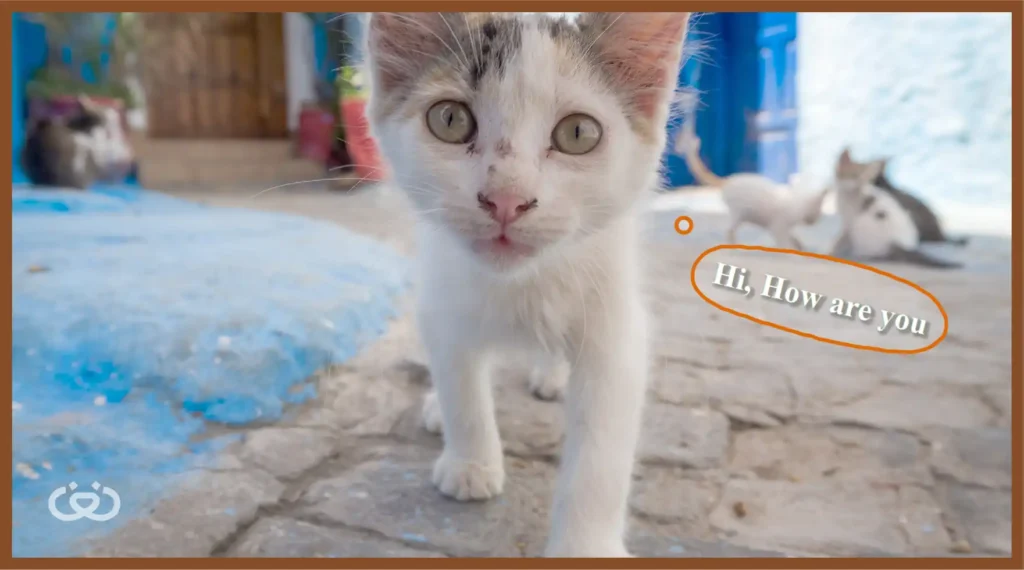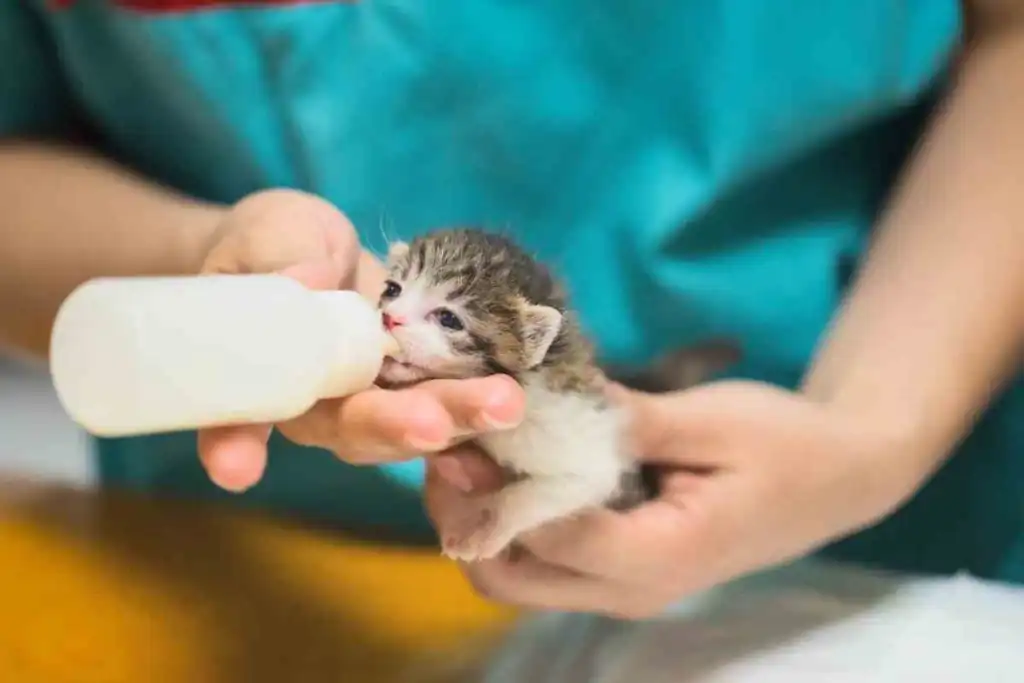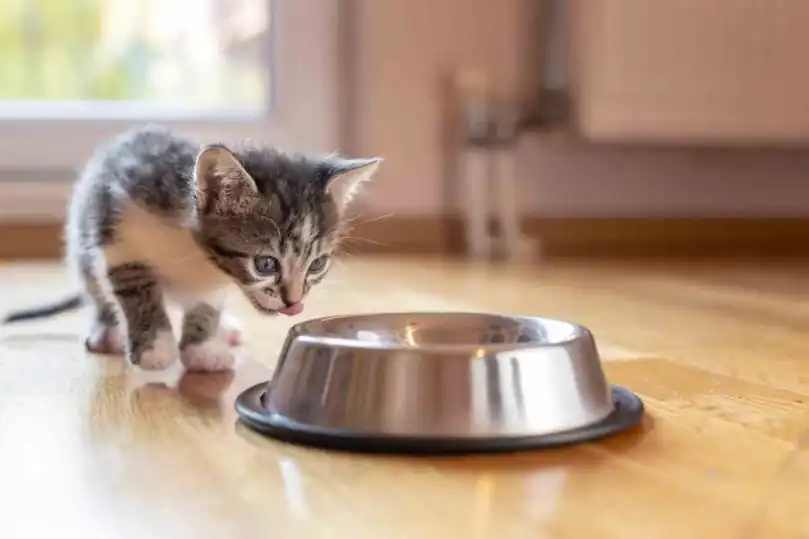Many people may hear a faint meowing sound while walking down the street and find a lonely kitten! Some kind-hearted people will immediately take their cats to the vet or go online for help. This kind of loving and life-protecting behavior is certainly commendable, but is it really the best thing for the cat? But is it really the best thing for your cat? Let’s question that for a moment!

First of all, we need to know: have the kittens really been abandoned by their mother?
Urban environments are very dangerous for female cats, so when a mom senses danger, she will take her kittens and move. However, since a mom can only move one kitten at a time, she usually hides her kittens in a haystack, under a car, or in a dumpster, which is usually the halfway point, not the end point, of the move. In the two months before a kitten is weaned, a cat mom may move 1 to 20 times, so the kitten found was probably in the process of being moved. Even though moms usually choose to move early in the morning or at a time when there are fewer people around, there may still be interruptions (such as people, cars, or dogs appearing out of nowhere), and this is a case of the kitten being “abandoned by the mom”.
Four steps to take care of your kitten

1. Observation
When you see a lone kitten, do not touch or move it, but observe it from a distance. The mother cat will usually take the kitten away within 10 to 30 minutes if she thinks it is safe to do so. It is important not to touch the kitten at this time, as the mom may abandon her if she gets any human scent.
You can also look at the kitten’s belly. If the kitten’s stomach is round and full, it means the mother cat is nearby. Observe the kitten for a few hours before you move, and don’t take the kitten away. If there is immediate danger, use plastic bags or gloves to move the kitten away from the danger, such as near a building or a place with less foot traffic, to ensure the kitten’s safety, and don’t stay with the kitten while it waits in case the mom doesn’t dare to come near.
On the other hand, if the kitten appears to have a flat stomach, is inactive, does not purr loudly enough, or has obvious injuries, it may have been abandoned for more than a day, so bring it to an animal hospital for a checkup.
2. After confirming that the mother cat is not coming back
The doctor will be able to correctly grasp the health condition of the kitten and determine the age of the kitten, which is crucial to the next steps in caring for the cat, and we can also easily use the cat’s eyes and ears as a basis for judgment:
● Around 7-10 days old: the kitten’s eyes are closed and its ears are hanging to the side.
● At 2 weeks: The eyes are open and the ears will slowly develop from the side upwards and become larger, with the tips about the same level as the top of the head.
● At 3 weeks: Teething, but not eating on their own yet.
● At 4 weeks: When the baby is about a month old, the bottom of the inside of the ear is almost level with the top of the head.
● If the kitten is over one month old and can eat off-dairy food and feed itself, it will have a better chance of survival because of its stronger resistance, so pay more attention to keeping it warm and ventilating it; if it is a kitten under one month old (commonly known as a nanny kitten), it will require more attention to its feeding and care!
Milk kittens: Kittens under one month old that cannot eat on their own and still need to be fed. A milky kitten: A kitten under one month of age that is unable to eat on its own and still needs to be fed milk.
3. Keep warm
Kittens within one month of birth are unable to keep themselves warm, especially after getting wet in the rain, and are more prone to heat loss. Hypothermia will cause kittens to become lethargic, inappetent, poorly refreshed, have weakened immunity and respiratory weakness, and their bodies will not be able to function, and they will sometimes fall asleep without waking up again.
Keep your pet’s body dry, use moist paper towels to clean and blow dry. A small pet blanket, a heat lamp, or a warm bag wrapped in cloth can do a good job of keeping your kitten warm and preventing colds.
Kittens have a temperature of 35.5-37 degrees when they are born, and 38-39 degrees one month later. Kittens or sick kittens are often suffering from hypothermia. If there is hypothermia, the body temperature must be stabilized before feeding because the stomach and intestines cannot function normally due to hypothermia, and what is eaten cannot be digested at this time, resulting in gas or vomiting, leading to ion imbalance and dehydration.
At this time, you can use 5-10% glucose water, about 1cc of glucose water for every 25g of body weight, and give it once an hour until the body temperature recovers and the kitten is able to move around normally.
4. Feeding the kitten
Preparation: small bottles or syringes, powdered milk for cats, wet wipes, and toilet paper.
※ The mouth of the teat should be cut into a cross shape, not too big at a time, just enough so that milk will drip down when you squeeze the bottle.
※ When using a syringe, be careful not to put a small rubber tube or other foreign objects in front of it to avoid swallowing by your kitten.
Cats are naturally less tolerant of lactose, so don’t let your cat drink milk like on TV or in cartoons. The lactose content of milk is too high and can easily lead to diarrhea, and in severe cases, even death due to dehydration. It is recommended that you use the American Beck’s Loves Cats formula, as many milk cats are fed with this brand.
The temperature of the milk is recommended to be between 35 and 38 degrees. If it is too cold, the kitten will refuse to drink. If it is too hot, the kitten will not only refuse to drink it, but will also burn the mucous membrane of the mouth.
Dispose of the unfinished milk directly to avoid storage problems, and reconstitute it for the next feeding.
Feeding amount
You can keep track of the amount of milk you drink at each meal for each age group. If you don’t get enough milk, you are likely to get dehydrated:
1 week: 5-10cc
2 weeks: 10-15cc
3 weeks: 15-20cc
4 weeks: 20cc or more
How many times a day do you drink milk?
1 week: 6-8 times
2 weeks:5~7 times
3 weeks:4~6 times
4 weeks: 4-5 times
How to feed
Feeding a kitten is different from feeding a baby, so please do not use the supine method. First, let the kitten stand or lie on its back, hold its head in place with your hand to prevent it from moving around, and then tilt its head upwards by about 45 to 90 degrees, so that the milk can flow in more easily and be swallowed more easily, and let the kitten inhale naturally as much as possible.

Most kittens will not suck milk from the bottle on their own when they first arrive, so you will need to use a syringe to feed them. Please grasp the principle of pushing only when swallowed, and at a rate of 0.1 cc each time, you can put your finger in your kitten’s throat to feel if she is swallowing, and if she is swallowing quickly, you can increase the amount of milk pushed out, or decrease it if she is drinking quickly, and be careful to avoid choking on milk.
If you do not swallow, you can gently stroke your finger up and down your cat’s throat to help swallowing. After feeding, we recommend patting your kitten’s back to avoid choking.
What is milk choking?
Milk choking into the trachea or even the lungs can lead to aspiration pneumonia or fluid retention in the lungs. It often occurs when the amount of food is too large for the cat to swallow, or when the cat fails to swallow but is still choking on the milk.
Symptoms of milk choking: Suddenly stops drinking, or milk comes out of the nose, or the head is twisted from side to side in resistance, or the hands push away the bottle in severe resistance, or coughing or breathing sounds…
When milk choking occurs, you can first urgently place the kitten in your hand with its head facing downward at about 45 degrees, and pat its back with your other hand. Observe whether there is any milk coming out of the nose, and if there is, wipe it off and continue to work until there is no more milk coming out and the situation returns to normal.
Assistance with defecation
When kittens are a few weeks old, they are usually unable to defecate and urinate on their own. In most cases, a great mom will use her tongue to stimulate the kitten to defecate by licking the buttocks (anus and vagina); however, if there is no mom around, we will need to help!
Generally speaking, you can stimulate your kitten after feeding (or before feeding to increase appetite).
You can use wet cloth, wet paper towel or toilet paper dipped in water to gently rub or touch your baby’s buttocks and urination area. Usually, you will urinate every time, and you will have a bowel movement once every one to two days, which will be in the shape of soft strips. If it is like water, it means diarrhea, and we suggest that you seek medical attention immediately. If you have not had a bowel movement for more than three days, we also suggest that you take it to the doctor for examination. Sometimes the stimulus may not be right, and thus may not be successful in helping the cat to poop.
At about three weeks of age, kittens can begin to learn to go to the toilet on their own.
Please note that kittens are usually more energetic and active, and this is a golden time to cherish, as their personalities will eventually stabilize in a few years’ time; please be patient and don’t leave them because of their mischievous behavior!




